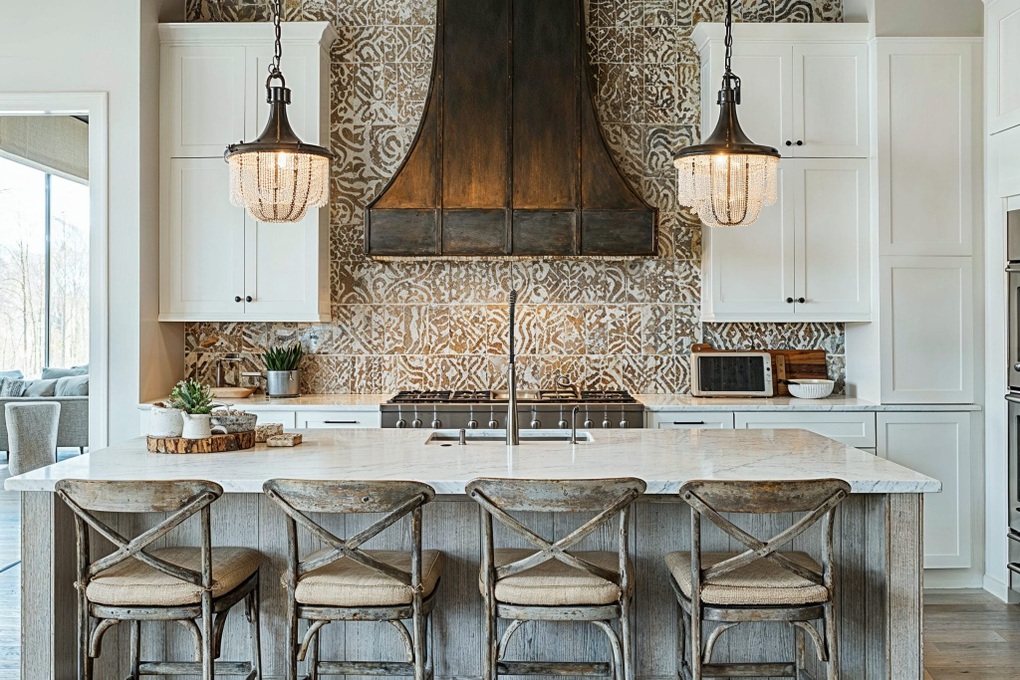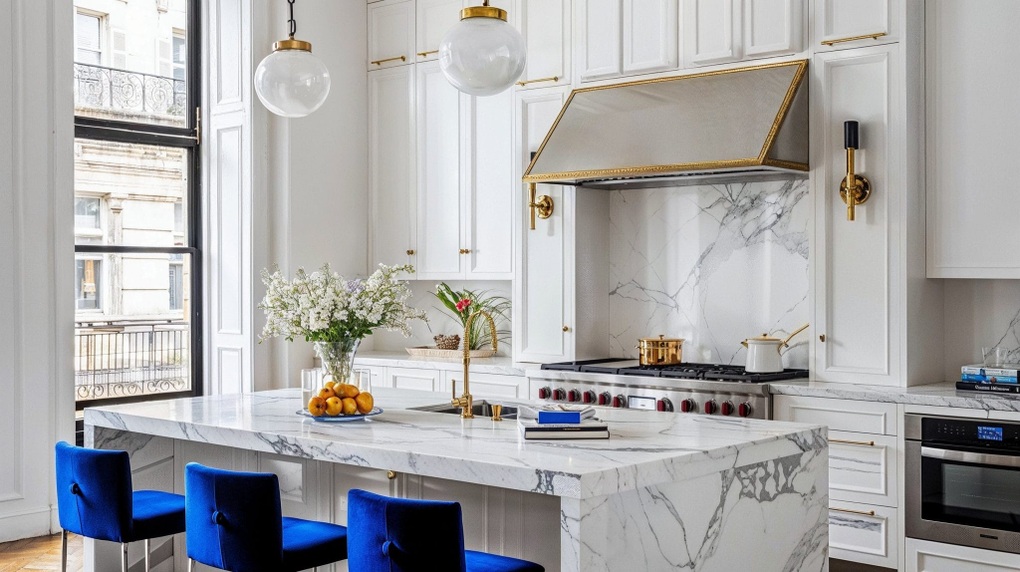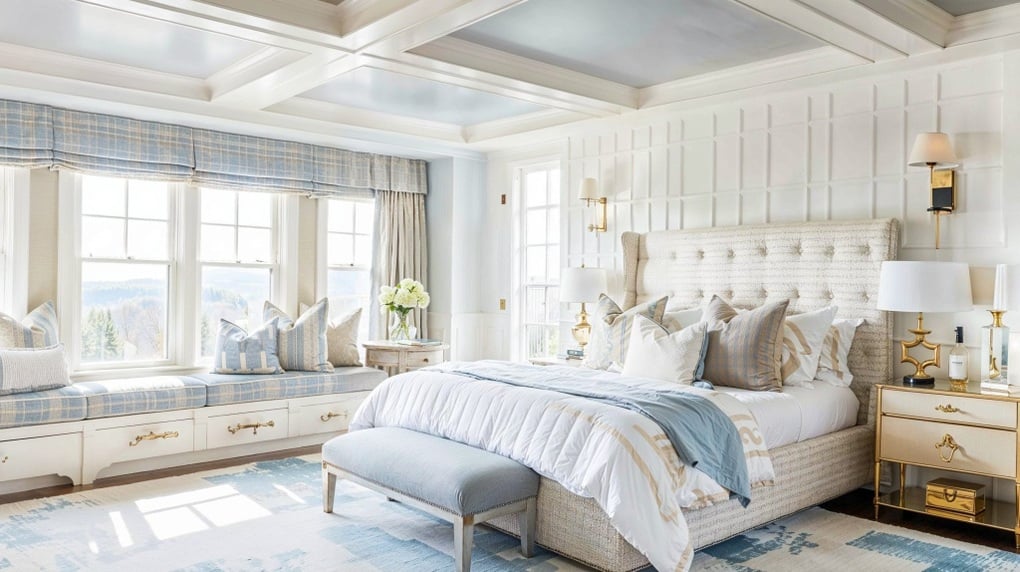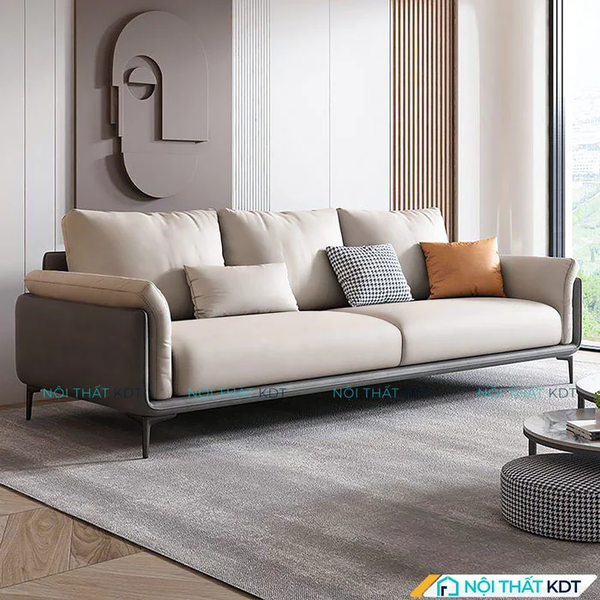(Dan Tri) - Layering light is an important technique in interior design, helping to create diverse living spaces that meet many different needs.
Instead of using just one type of light, combining different light sources will bring unexpected visual and emotional effects. Here are some tips revealed by Decorilla to help you easily create the perfect interior space from the lighting element.
Light layering by lighting system

Layered lighting in the kitchen (Photo: Decorilla).
In interior design, artificial light from the lighting system is divided into 3 groups. General lighting with the function of illuminating the entire space, creating even brightness. Accent lighting is used to focus on a certain point, creating a highlight. Task lighting is used for specific activities such as reading, working or cooking.
However, the art of interior lighting design today has gone beyond the usual function. Lamps when combined with other furniture with certain styles, materials and positions will create harmony for the aesthetics of the room.
Combine various styles

Layered lighting in the living room (Photo: Decorilla).
If you use the same type of lamp, the interior of the house will be very boring. You can intentionally combine different styles of lamps. For example, the living room with a traditional chandelier combined with modern recessed lights will create an interesting feeling.
However, you also need to identify a unifying and balancing element between the types of lights, which can be the shape, pattern, size to avoid creating visual chaos. For example, if the chandelier has intricate details, choose wall lamps with simpler lines to balance the look.
Uniform in color and material

Use lamps with similar materials (Photo: Decorilla).
Color and materials are powerful tools when it comes to combining different furniture pieces. For example, if you want to combine a vintage-inspired wall sconce with a more modern light fixture, make sure they both share a common material, such as a brass or matte black base.
Likewise, a cool-toned metal floor lamp can pair beautifully with a pendant light in a similar tone, like pewter or nickel. This approach allows each fixture to have its own unique style without looking out of place.
Harmony in scale and proportion

A room with bright tones (Photo: Decorilla).
The size and scale of furniture is important when it comes to how it is put together. The same goes for layering light. Balancing large and small pieces of light will help create visual harmony in the space.
For example, small, delicate wall sconces will complement a large chandelier. In spaces with higher ceilings, such as a living room, a large central pendant can act as a focal point, while smaller, more delicate floor lamps will help fill in the ambient light at eye level.
A common mistake is to combine two lamps of the same size and scale. This can overwhelm the room. Instead, let the largest or most elaborate lamp dominate while the others play supporting roles.
Note on lamp types
A large pendant light or chandelier in the middle of the ceiling, along with natural light, will set the tone for the room. For a modern space, consider a sleek pendant light in matte brass. For a traditional interior, a wrought iron chandelier will add a unique touch.
Wall sconces often create a sense of intimacy, adding light in the middle of a space. Wall sconces should be placed on either side of a fireplace, at the head of a bed, or to illuminate artwork.
Floor lamps are often placed next to sofas or armchairs. They act as reading lights. When choosing a floor lamp, keep in mind the appropriate height and material so that it does not overwhelm other objects.
Source: https://dantri.com.vn/bat-dong-san/ho-bien-noi-that-tro-nen-hoan-hao-nho-bo-tri-anh-sang-thong-minh-20241210094446598.htm



![[Photo] Prime Minister Pham Minh Chinh chairs the meeting of the Government Party Committee Standing Committee](https://vstatic.vietnam.vn/vietnam/resource/IMAGE/2025/8/23/8e94aa3d26424d1ab1528c3e4bbacc45)
![[Photo] General Secretary To Lam attends the 80th Anniversary of the Cultural Sector's Traditional Day](https://vstatic.vietnam.vn/vietnam/resource/IMAGE/2025/8/23/7a88e6b58502490aa153adf8f0eec2b2)
































































































Comment (0)